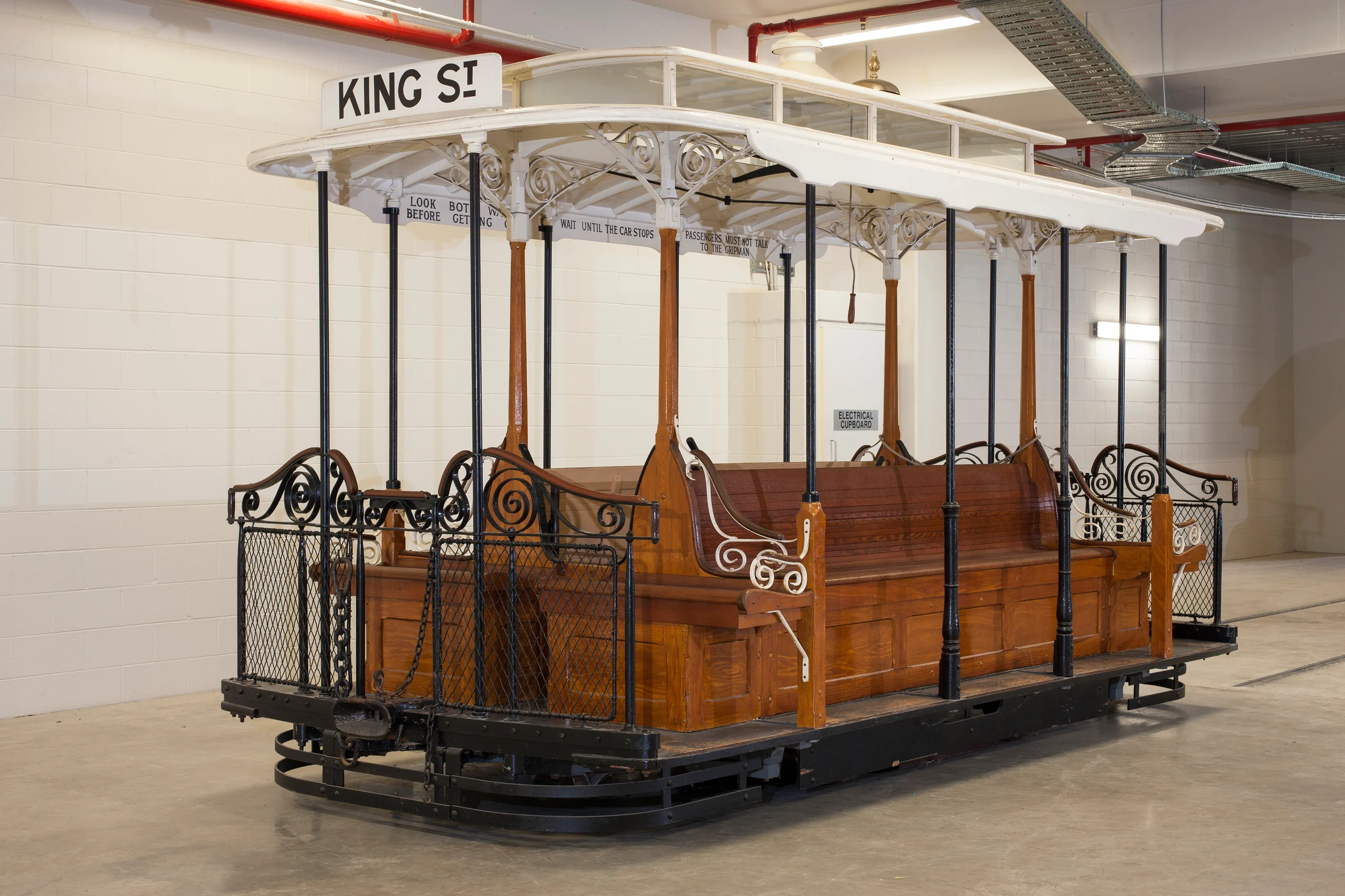
Physical Description
This 22-passenger cable tram grip car is made of wood with iron trimming and fittings. The tram was propelled by an underground steel cable, which was connected to the grip car by means of a grip mechanism. This was a heavy steel assembly which passed through a hole in the floor of the car to grip the cable below. The cable ran in a slot between the rails and was continuously kept moving by a steam driven winding engine located in an engine house situated on the route. To set the tram in motion, the driver or 'gripman' operated a lever, which enabled the mechanism to be lowered and grip the cable below. To stop, there were two sets of brakes, both lever operated. One set applied wooden blocks to the rails, while the other applied wooden brake shoes to the four wheels of the car. The tram car is open and does not have any doors or windows.
Silver gelatin dry plate glass negative in portrait format. There are no inscriptions on the negative. The Tyrrell Collection Inventory records the above caption but does not attribute the negative to a studio.
Object Statement
Glass plate negative, full plate, 'Electric Tram, George Street, David Jones Corner', unattributed studio, Sydney, Australia, c. 1880-1923Cable tram, grip car, full size, used on cable tram system, Melbourne, Victoria, 1885-1940, restored as a King Street, Sydney, cable tram
Production
This tram car was manufactured in the 19th century.
Dimensions
- Height: 3000mm
- Width: 2100 mm
History
This Melbourne grip car was donated to the Museum by Monash University in 1962. It was brought up from Melbourne in a very poor state and virtually rebuilt as a Sydney King Street tram for display in Stage 1 of the Powerhouse Museum which opened in 1981.Visitors were encouraged to sit on the tram to experience tram travel.
The Melbourne Tramway & Omnibus Co, under the management of Francis B. Clapp, developed a system of about 75 km of double track serving 17 radiating routes with 1200 grip cars and trailers which operated for 55 years from 1885. By 1920 it was carrying 150 million passengers a year and was said to be one of the world's largest cable tram systems. Cable trams were gradually replaced by faster electric trams from 1925.
As one writer with a fondness for trams recalls: "The swaying, bucking progress - rather like riding a low slung racing camel - always had something of the funfair about it. Despite the traditional warning cry ? Mind the bend!! - little old ladies and frail or befuddled gentlemen were apt to fly off as it lurched around. If the driver (bandit king of the road) missed his grip on the ever-moving cable, or misjudged his speed, the tram baulked and customers piled off to push it round the corner to clamp on the cable again. It was in the dark year of 1940 that I watched the last living cable tram lollop up Bourke Street. I knew with certainty that the world would never be the same again. Melbourne blew it when it stupidly and wantonly did away with its cable trams".
Sydney had only two short cable trams systems too steep for steam trams. One was at North Sydney and it was powered from a winding engine house and tram depot building in Miller Street, now the site of the Independent Theatre. The line went down to the ferry wharf at Milsons Point. The other Sydney cable tram service went from the bottom end of King Street Wharf at Darling Harbour to Ocean Street, Edgecliff. The winding engine house to drive the cable was at Rushcutters Bay. It was later used as a trolley bus depot and then a ten-pin bowling alley. The cable trams finished in Sydney in 1905 with the demise of the steam tram and extensive use of electric trams. Apparently the old trailing cars were sold for a couple of pounds and made for quite snug little houses.